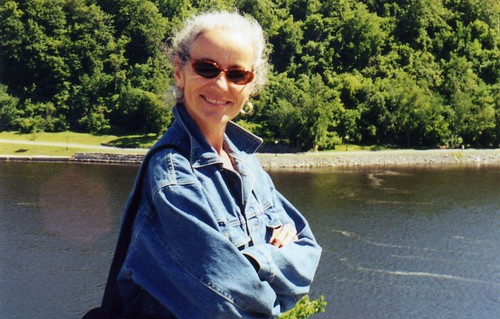
Danièle Lacourse, Director of the Alter-ciné Foundation.
What are documentary filmmakers in ‘third world’ countries working on ? One way to find out is to talk to the Director of the Alter-Ciné Foundation, Danièle Lacourse. The Foundation was established in memory of my friend and colleague Yvan Patry, a pioneering filmmaker and Danièle’s partner, who died ten years ago. It aims to support filmmakers in developing countries whose work promotes human rights and gives out two or three cash awards each year. ( for last years awards see my blog post) Here is my conversation with Danièle:
1. In general, in the projects that you receive from Southern countries, is it the subjects that are pre-eminent or is there also a will to develop an original treatment?
It varies from one country to the other, from one project to the other. I believe that there are more and more filmmakers from the south that are also preoccupied with treatment in order to give more impact to their films. This is seen particularly in countries where there is a strong documentary tradition, like in Argentine for instance.
In terms of our criteria, the main requirement is that the film treats of rights and liberties, understood in its broadest sense, i.e. as much political rights, as economical, social, cultural and other. But if the theme is important, the treatment is also in our view: the foundation supports the documentary of creation, therefore an approach and course of action that is cinematically original and creative, that actually often serves the point better than a didactic documentary, suited or tele formatted.
2. Are there notable differences between the continents? In terms of the nature of the projects and of the filmmakers situations?
First difference: 75% of the projects that we receive are from Latin America, therefore only 25% of the projects that come from Asia and Africa. Difficult to analyse the causes: is it only better access to the internet or better networking, closer ties between documentary filmmakers of Latin America that circulate the information between their associations? Or is there a greater production of documentaries in Latin America compared to Africa and Asia? One thing is certain, filmmakers from Africa and Asia seem more isolated than those in Latin America, but this impression remains to be verified.
With regard to the nature of the projects, it is difficult to see thematic differences between continents, even if certain themes, like the one of disappearances for example, are accosted more in Latin America than elsewhere. With regard to the cinematic approach, it comes from the culture and the history. For example, the African filmmakers often have a montage approach, of time and duration, different from the one found in Latin American filmmakers, as they give particular importance to the “voice” in the narrative.
3. Since the foundation began its activities, what are the changes that you have noticed in the projects submitted?
A greater variety of themes and approaches. In the beginning, we received many more projects strictly about political and economical rights (repression, dictatorship, poverty, etc) with a rather classic cinematic treatment or closer to reportage or the “didactic tool”. Currently, we are receiving more projects dealing with questions of the environment, indigenous peoples, immigration, cultures and the treatment is more often closer to direct cinema, more audacious, more personal, more creative.
4. Here I imagine that the average budget of a one hour documentary is $350,000. How is it for the proposals that you receive?
It varies considerably from one project to the other. The majority of the projects have a budget somewhere between $60,000 et $150,000. But there are also projects that are shot with $30,000 or less: in that case, the director often has access to “borrowed” equipment for shooting and editing. In the case of the documentary “Oscar” by the Argentinean Sergio Morkin for example, the budget was minor. Sergio shot it himself with cameras here and there; he recycled his shooting cassettes; and all of his friends were put to contribution to help direct the film. The small digital cameras also contributed to “democratizing” the documentary by cutting the production costs. In the case of “Raymundo”, the directors had installed their small editing unit in their living room which allowed them to edit during one whole year, which would’ve been unthinkable if they had had to rent an editing suite. What we were also able to notice, is that, when there is an emergency, these filmmakers always find a way to make their films, even without exterior financing.
5. How are these films from the South distributed?
Many of these films are presented in festivals (the film “Raymundo” for example won 15 prizes in various festivals around the world), which allows a certain visibility. But they are mostly distributed in various local and national networks: organisms involved in the defence of rights and liberties, neighbourhood organizations, community organisms, unions, universities, etc. In general, the directors accompany this distribution of their film and get in direct contact with the public that is involved. Sometimes also, certain documentaries (like “Keiskamma une histoire d’amour”) have been presented on a national television channel (SABC in South Africa), which give the possibility to touch another public.
(Thanks to Steven Ladouceur for his help with this post)